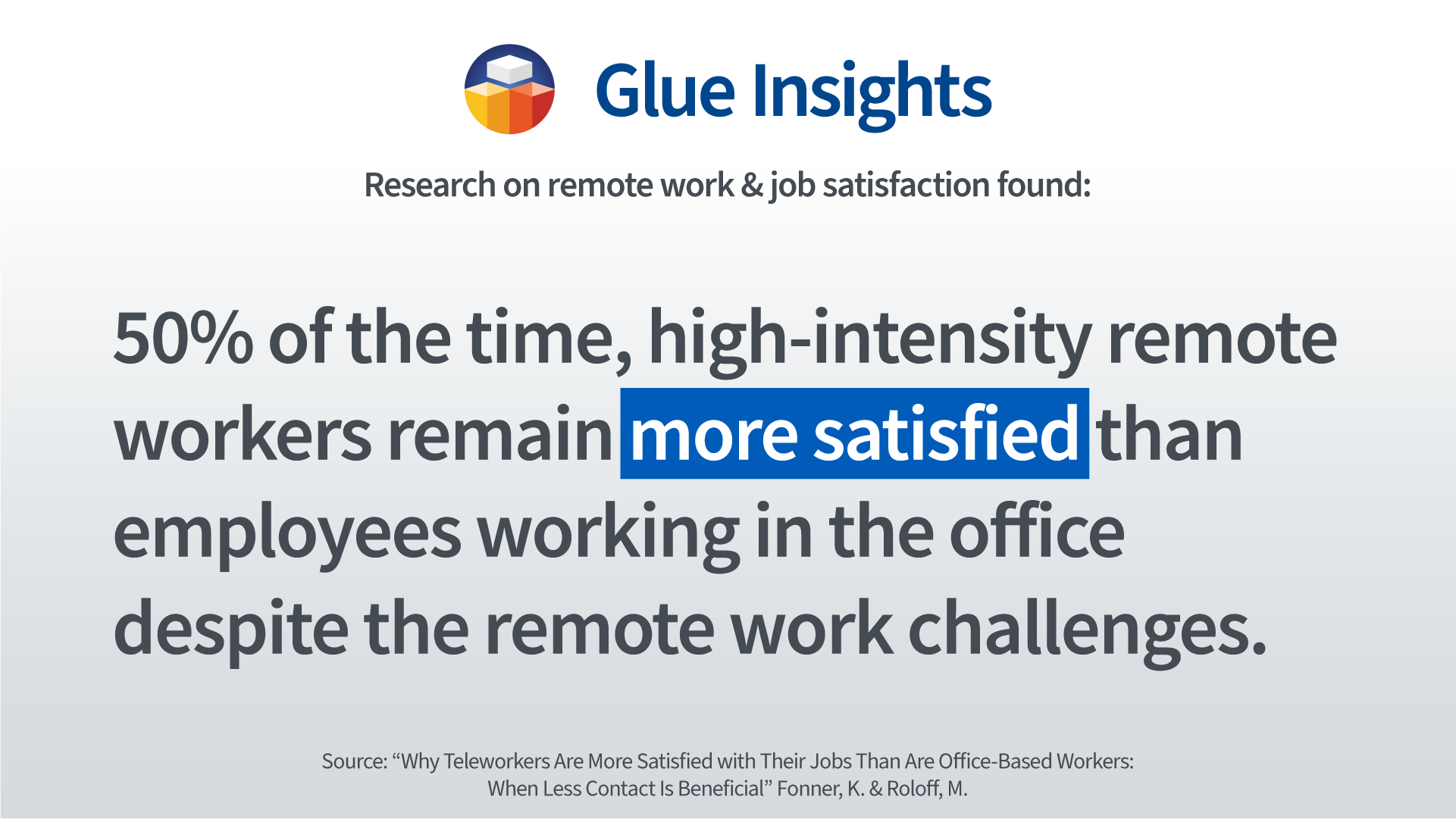Research on remote work provides an interesting conclusion:
Despite the challenges of remote work, 50% of the time, high-intensity remote workers are more satisfied than employees working in the office.
One of the reasons for higher job satisfaction is connected to more structural communication virtually.
In F2F settings, employees have an easier way to communicate which leads to interruptions of workflow and overload of information leading to increased stress levels and inability to complete tasks in time.
F2F communication is not always more efficient than virtual communication, it is crucial to know when less contact is beneficial for productivity.
By allowing employees to work remotely, you can increase the level of job satisfaction, minimise work-life conflict and make your team more efficient.
Learn more about remote work and productivity in our #GlueInsights: https://glue.work/insights/


